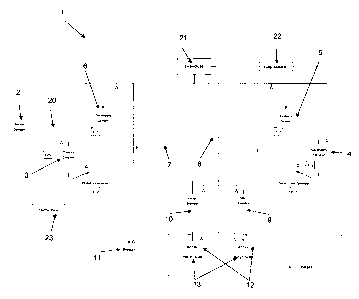Some of the information on this Web page has been provided by external sources. The Government of Canada is not responsible for the accuracy, reliability or currency of the information supplied by external sources. Users wishing to rely upon this information should consult directly with the source of the information. Content provided by external sources is not subject to official languages, privacy and accessibility requirements.
Any discrepancies in the text and image of the Claims and Abstract are due to differing posting times. Text of the Claims and Abstract are posted:
| (12) Patent Application: | (11) CA 2702597 |
|---|---|
| (54) English Title: | CRUSHING AND BLENDING SYSTEM AND METHOD |
| (54) French Title: | SYSTEME ET PROCEDE DE BROYAGE ET DE MELANGE |
| Status: | Deemed Abandoned and Beyond the Period of Reinstatement - Pending Response to Notice of Disregarded Communication |
| (51) International Patent Classification (IPC): |
|
|---|---|
| (72) Inventors : |
|
| (73) Owners : |
|
| (71) Applicants : |
|
| (74) Agent: | LAVERY, DE BILLY, LLP |
| (74) Associate agent: | |
| (45) Issued: | |
| (22) Filed Date: | 2010-05-04 |
| (41) Open to Public Inspection: | 2011-11-04 |
| Availability of licence: | N/A |
| Dedicated to the Public: | N/A |
| (25) Language of filing: | English |
| Patent Cooperation Treaty (PCT): | No |
|---|
| (30) Application Priority Data: | None |
|---|
A crushing apparatus for crushing a material including a first crusher for
crushing the
material into a first output; a first conveyor for transporting the first
output; a first screen for
separating the first output conveyed by the first conveyor into a first
screened material and a
second screened material; a second crusher for crushing the second screened
material into
a second output; a second conveyor for transporting the second output and the
first
screened material that are respectively received from the second crusher and
the first
screen; and a second screen for separating the second output and the first
screen material
conveyed by the second conveyor into a product material and a third screened
material;
wherein the third screened material is received by the first conveyor.
Note: Claims are shown in the official language in which they were submitted.
Note: Descriptions are shown in the official language in which they were submitted.

2024-08-01:As part of the Next Generation Patents (NGP) transition, the Canadian Patents Database (CPD) now contains a more detailed Event History, which replicates the Event Log of our new back-office solution.
Please note that "Inactive:" events refers to events no longer in use in our new back-office solution.
For a clearer understanding of the status of the application/patent presented on this page, the site Disclaimer , as well as the definitions for Patent , Event History , Maintenance Fee and Payment History should be consulted.
| Description | Date |
|---|---|
| Application Not Reinstated by Deadline | 2013-05-06 |
| Time Limit for Reversal Expired | 2013-05-06 |
| Deemed Abandoned - Failure to Respond to Maintenance Fee Notice | 2012-05-04 |
| Application Published (Open to Public Inspection) | 2011-11-04 |
| Inactive: Cover page published | 2011-11-03 |
| Inactive: First IPC assigned | 2010-08-11 |
| Inactive: IPC assigned | 2010-08-11 |
| Inactive: IPC assigned | 2010-08-11 |
| Application Received - Regular National | 2010-06-03 |
| Inactive: Filing certificate - No RFE (English) | 2010-06-03 |
| Correct Inventor Requirements Determined Compliant | 2010-06-03 |
| Abandonment Date | Reason | Reinstatement Date |
|---|---|---|
| 2012-05-04 |
| Fee Type | Anniversary Year | Due Date | Paid Date |
|---|---|---|---|
| Application fee - standard | 2010-05-04 |
Note: Records showing the ownership history in alphabetical order.
| Current Owners on Record |
|---|
| XSTRATA CANADA CORPORATION |
| Past Owners on Record |
|---|
| DAVE MIDDLEDITCH |
| DOMINIC FRAGOMENI |
| PAT CARRIERE |